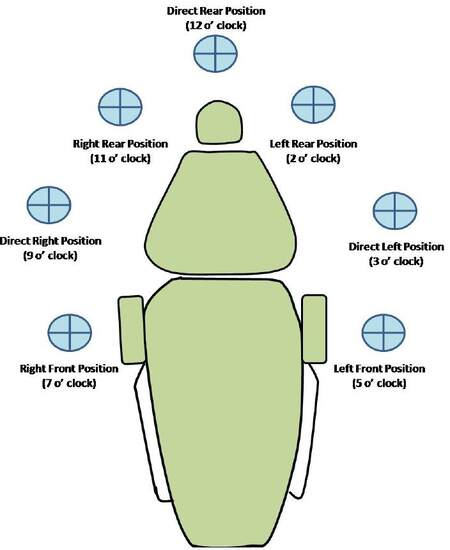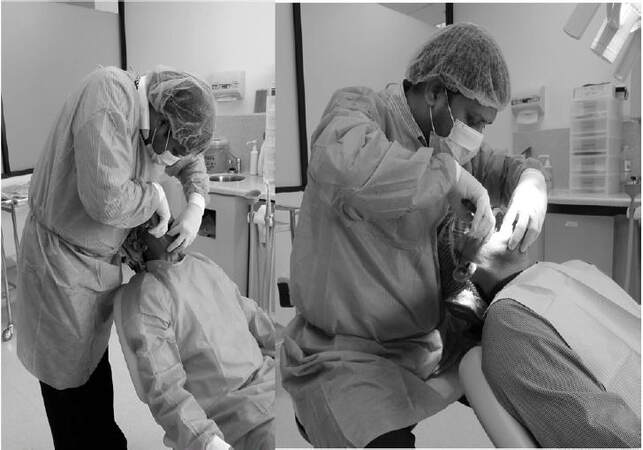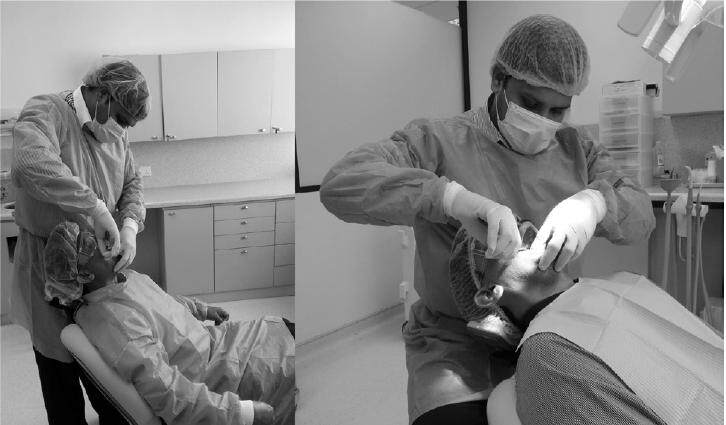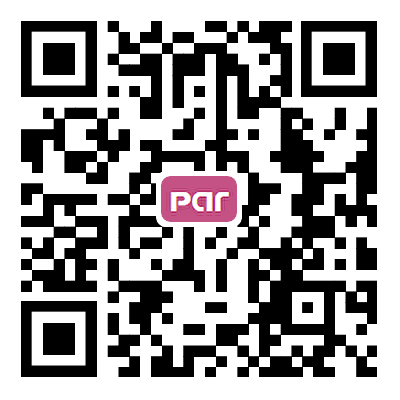The most compatible position of operator for mandibular right posterior teeth extraction
Sir,
The positions of the dental chair, patient and operator are critical for successful completion of tooth extraction.[1] Whilst, the proper positioning of the operator is very important to have good visibility and accessibility of the oral cavity, besides allowing the surgeon to have maximal control of the force that is being delivered to the patient’s tooth through the forceps.[1] Also, proper operating position and good posture reduces fatigue and physical strain and possibility of developing musculo-skeletal disorders.
For extraction of the mandibular right posterior teeth, a right-handed operator would usually stand at the right rear position (11 o’clock) or direct rear position[2] (12 o’clock) [Figure 1]. These positions give good visibility and maximal accessibility to the oral cavity posteriorly as far as right first mandibular molar. However, a diminished accessibility is experienced by many operators when extracting the right second and third molars from these positions. It also results in unnecessary curvature of the spine or slumping of shoulders during the surgical procedure leading to physical strain [Figure 2].
Figure 2. Diminished visibility and accessibility during extraction of mandibular right posterior teeth from right rear position
With the intention to overcome this diminished accessibility and to enhance the effectiveness of the operator, the authors recommend positioning of a right-handed operator at the left rear position (2 o’clock) for extraction of the mandibular right posterior teeth [Figure 3]. This compatible operator position provides a more balanced posture with increased visibility and accessibility to the oral cavity when extracting the mandibular right second and third molars.
Financial support and sponsorship
Nil.
Conflicts of interest
There are no conflicts of interest.
Cite This Article
Export citation file: BibTeX | RIS
OAE Style
Kumaresan R, Pendyala S, Dhanavel J. The most compatible position of operator for mandibular right posterior teeth extraction. Plast Aesthet Res 2016;3:257-8. http://dx.doi.org/10.20517/2347-9264.2016.04
AMA Style
Kumaresan R, Pendyala S, Dhanavel J. The most compatible position of operator for mandibular right posterior teeth extraction. Plastic and Aesthetic Research. 2016; 3: 257-8. http://dx.doi.org/10.20517/2347-9264.2016.04
Chicago/Turabian Style
Kumaresan, Ramesh, Sivakumar Pendyala, Jawahar Dhanavel. 2016. "The most compatible position of operator for mandibular right posterior teeth extraction" Plastic and Aesthetic Research. 3: 257-8. http://dx.doi.org/10.20517/2347-9264.2016.04
ACS Style
Kumaresan, R.; Pendyala S.; Dhanavel J. The most compatible position of operator for mandibular right posterior teeth extraction. Plast. Aesthet. Res. 2016, 3, 257-8. http://dx.doi.org/10.20517/2347-9264.2016.04
About This Article
Copyright
Data & Comments
Data

 Cite This Article 6 clicks
Cite This Article 6 clicks













Comments
Comments must be written in English. Spam, offensive content, impersonation, and private information will not be permitted. If any comment is reported and identified as inappropriate content by OAE staff, the comment will be removed without notice. If you have any queries or need any help, please contact us at support@oaepublish.com.